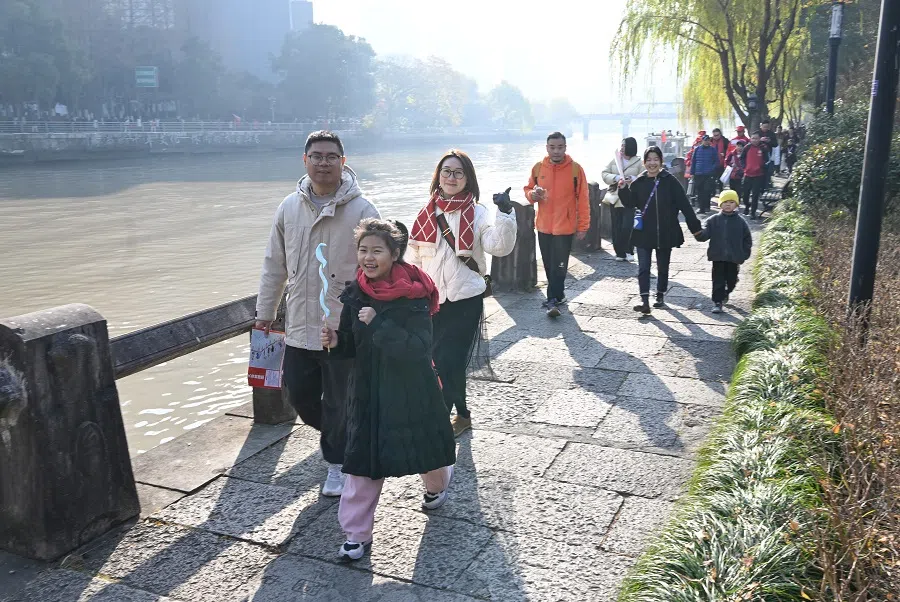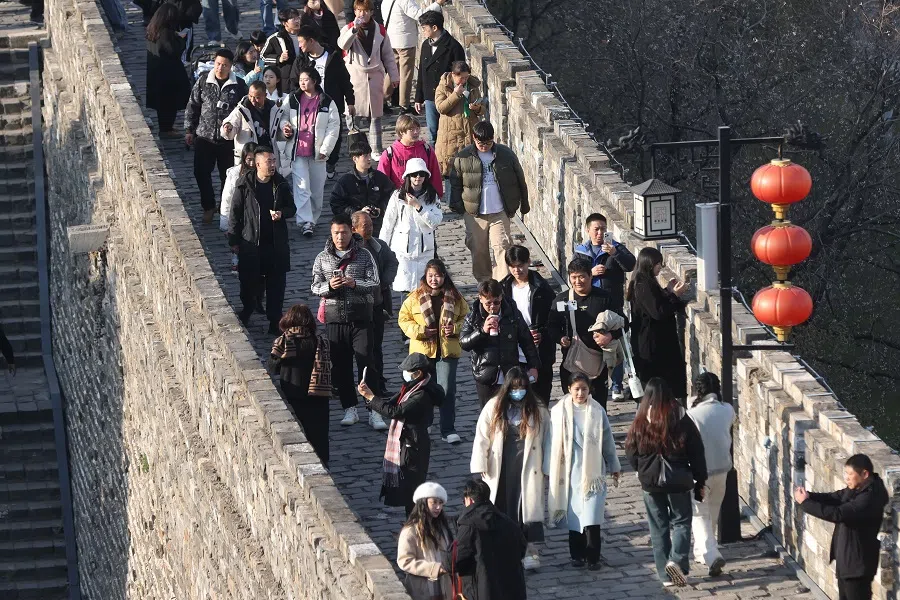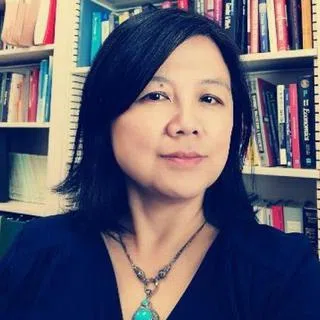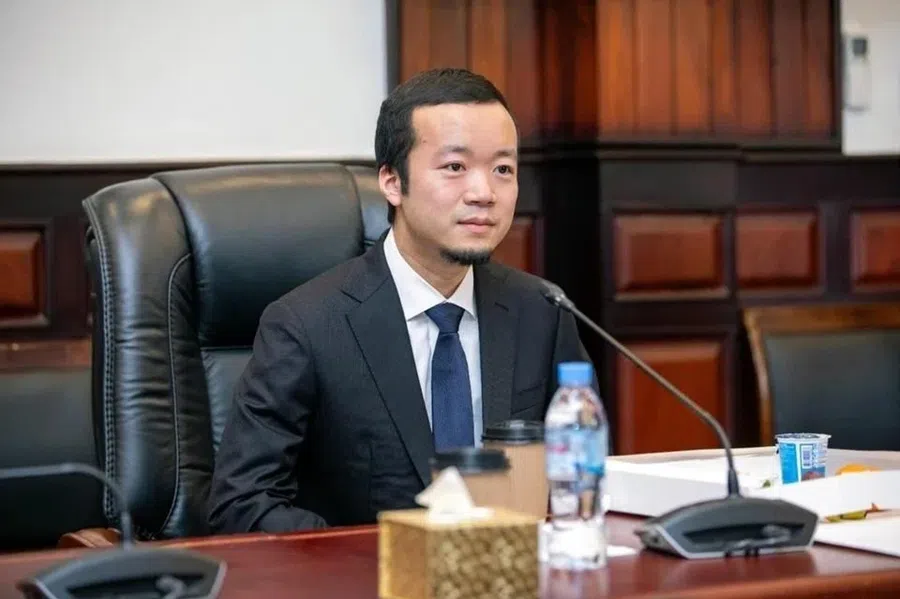In marriage, do us apart: Changing family forms in Jiangsu, Zhejiang and Shanghai [Eye on JiangZheHu series]
Jiangsu, Zhejiang and Shanghai’s dynamic economy, great social mobility, rising cost of living, exorbitant housing prices, intense competition and costly childcare have prompted a shift towards a wider variety of family forms to cope with these modern challenges. These pragmatic and innovative family and marriage arrangements have enriched the Chinese family system, asserts US academic Xiaoling Shu.

The Changjiang Delta region of Jiangsu (江苏), Zhejiang (浙江) and Shanghai (上海) is among China’s most affluent areas, characterised by high GDP, rapid urbanisation, robust industrial activities and thriving service sectors. Its dynamic economy, great social mobility, rising cost of living, exorbitant housing prices, intense competition and costly childcare have prompted a shift towards a wider variety of family forms to cope with these modern challenges. These pragmatic and innovative family and marriage arrangements have enriched the Chinese family system.
Coupled with these new complexities, a three-decade legacy of China’s one-child policy has also motivated alternative family forms. This area, known as JiangZheHu (江浙沪), strictly enforced the family planning policy, leading to high numbers of single-child households. According to the 2005 Census, the percentage of single children aged 0-30 in the population was 58% in Shanghai, 47% in Jiangsu and 37% in Zhejiang, outnumbering the national average of 29%. This birth cohort has reached marriage and fertility age in the last two decades.
In the rural areas of Zhejiang and Jiangsu, single-child households with daughters face significant implications for property rights and family dynamics. The division of land in villages is decided by the size of the households and family properties are passed down through male heirs. Daughters who marry into their husbands’ villages lose claim to communal land in their parental villages and properties from their parents’ households.
In two-sided marriages, the husbands and wives are regarded as equal. Neither of the couple “marries in” (娶) or “marries out” (嫁).
Coping with modern pressures and consequences of one-child policy
As a result, “two-sided” marriages (两头婚) have emerged organically from creative families in JiangZheHu to cope with rising economic and social pressure and property rights preservation.
In two-sided marriages, the husbands and wives are regarded as equal. Neither of the couple “marries in” (娶) or “marries out” (嫁). There is no exchange of bride prices (彩礼) or dowries (嫁妆) between the brides’ and grooms’ families. These husbands and wives usually remain in their natal households living with their parents, separate from their spouses, although some couples may have their place for the nuclear family on weekends. The brides and grooms often remain on the household registration in their parental household to ensure property claims in their natal families and villages.
Parents of marriage-age children in these regions, often with substantial savings or property assets, play an active role in facilitating this arrangement by providing housing and resources to their wedded children.

These spouses operate as economically independent entities. The wives are no longer required to sacrifice career opportunities for domestic responsibilities or their husband’s professional advancement. The husbands have no obligation to be the primary breadwinners financially responsible for the nuclear families. These couples often have two children, one receiving the maternal grandfather’s last name while the other bears the father’s family name, although there are occasional disputes over which child to take which grandfather’s family name, often over a male child.
This mode of marriage offers a practical solution, allowing couples to benefit from their natal families’ financial and childcare support. Parents of marriage-age children in these regions, often with substantial savings or property assets, play an active role in facilitating this arrangement by providing housing and resources to their wedded children. This arrangement alleviates concerns about losing assets through marriage and provides a practical mechanism for single-girl families to navigate the traditional emphasis on lineage and inheritance.
Despite these deviations from tradition, two-sided marriages reinforce long-established values and practices.
Old vs new and tradition vs practicality
Two-sided marriages break away from the patriarchal family practices in multiple ways. It grants husband and wife economic and social equality as independent partners without subjugation to the traditional expectations of gender roles of male breadwinners and female caretakers. It disrupts the entrenched tradition of patrilineality, where lineage is traced exclusively through the male line. It promotes equality and preserves the lineage of both husbands and wives by balancing the familial claims of both the husband and wife’s natal families. It also undermines the traditional patrilineal inheritance norms, allowing women to gain a foothold in property ownership.
Despite these deviations from tradition, two-sided marriages reinforce long-established values and practices. It upholds the traditional ideals of lineage preservation that maternal grandfathers, usually fathers of only daughters, enjoy family lineage continuity and maintain their socioeconomic standings. It reinforces the time-honoured multigenerational family codependence in which the parents of both spouses provide crucial support, including housing, financial assistance and childcare. It ensures the Confucian value of filial piety expecting both daughters and sons to reciprocate by caring for their parents in old age.
By blending tradition with practicality, two-sided marriages compose a creative approach to family formation that aligns with the fast-evolving socioeconomic landscape of China.

These novel arrangements reflect a nuanced negotiation of familial expectations, traditions, norms and modern lifestyles. For the young couple, two-sided marriages provide tangible benefits including reduced work-family conflict, free housing and financial support, alleviating the intense demands of a competitive and globalised economy.
For the parents of these young couples, it offers a way to uphold traditional ideals of lineage preservation and old-age security to cope with the challenges posed by China’s one-child policy and economic transformation. For these wives of two-sided marriages, these arrangements benefit them by liberating them from housework and childcare obligations in their nuclear family and enhancing their labour force competitiveness.
By blending tradition with practicality, two-sided marriages compose a creative approach to family formation that aligns with the fast-evolving socioeconomic landscape of China. It highlights China’s unique trajectory in redefining its gender, marriage and family systems, deviating from the patterns seen in the West, especially northwest Europe. This adaptation is consistent with findings from a national survey of the Chinese General Social Survey (CGSS) (2010-2017) on the contours of marriage and family values in China.
New Familism has also adapted to the new realities of gender equality, rejection of patrilineality, dethroning of marriage and acceptance of modern family forms.
Transition in family attitudes in China
Two-sided marriages exemplify the interplay of tradition and modernity in contemporary China that has given rise to “New Familism”. This is a hybrid value system characterised by selective adaptation between the old and new. This framework combines persistent beliefs in filial piety and family interdependence with emerging trends such as gender equality, rejection of patrilineality, delayed marriage and acceptance of alternative family forms like divorce, cohabitation and childlessness. Analysis of national data from the CGSS in my book entitled Chinese Marriages in Transition: From Patriarchy to New Familism (2023) shows that the prevailing attitudes toward marriage and family reflect such an orientation.
This New Familism value system consists of a staunch belief in the traditional norms of filial piety and family interdependence, and values strongly buttressed in the two-sided marriages in JiangZheHu. Filial piety remains a resilient cultural norm. Children are expected to respect, care for and financially support their parents, a duty that aligns with the state’s emphasis on family-based eldercare. Even amid modernisation, these obligations are deeply embedded in Chinese society, particularly in rural areas with limited state welfare provisions. Data from the CGSS show the majority of people endorse the idea that children are expected to “have respect for their parents, be grateful to their parents, respect parents unconditionally and provide financial support to parents”.
New Familism has also adapted to the new realities of gender equality, rejection of patrilineality, dethroning of marriage and acceptance of modern family forms. The four measures in CGSS on gender attitudes indicate that more people endorse egalitarian rather than nonegalitarian gender attitudes. These measures are “Not important for wives to support husbands’ careers than her own”, “Disagree husbands’ responsibility is breadwinning and wives’ homemaking”, “Good for mothers of preschoolers to work”, and “Women should not be laid off first in a poor economy”.
... patrilineality, one of the cornerstones of the Confucianism family system, has transformed toward a nontraditional direction.

Moreover, patrilineality, one of the cornerstones of the Confucianism family system, has transformed toward a nontraditional direction. More people hold nontraditional attitudes than traditional ones on two of the three measures in the CGSS, “Oldest sons are not entitled to more inheritance” and “There is no need to have sons to preserve the family line”. However, a considerable number of people still agree with the statement that “Father’s authority should always be respected”, showing the resilience of the belief in fathers as patriarchal heads that demand reverence from their children.
... people are becoming accepting of declining gender role differentiation, perceiving a decreasing value of legal marriages, placing less emphasis on patrilineality, and more tolerance of modern family forms of divorce, cohabitation and childlessness.
Greater acceptance of new forms of families
Attitudes toward modern forms of family have also experienced a dramatic transition, shifting to an even division among the Chinese who endorse nonconventional family forms and those who do not. These three measures in the CGSS of childlessness, cohabitations and divorce are in the format of these statements: “It’s OK to not have children after marriage”, “It’s OK to live together with no intention to marry”, and “Divorce is the best way out when couples can’t reconcile”. Marriage, a resilient institution in China, has become unattainable for the rural poor males and dethroned among urban women with a college education.
On the one hand, New Familism reinforces belief in obedience and respect to parents, acceptance of intergenerational support for the young and elderly, and maintains a strong sense of familial responsibility. On the other hand, people are becoming accepting of declining gender role differentiation, perceiving a decreasing value of legal marriages, placing less emphasis on patrilineality, and more tolerance of modern family forms of divorce, cohabitation and childlessness.
Modernisation forces such as urbanisation, education, and younger cohorts are harbingers of transitions in some dimensions of family values. Education plays a critical role in shaping new familist attitudes. As access to education expands, individuals are better equipped to challenge traditional family expectations and adopt more nonconventional views. This shift is particularly evident in urban areas, where modern lifestyle and widened life horizons correlate with a greater acceptance of diverse family forms. Members of the younger birth cohorts are more likely to reject the traditional gender roles, more accepting of new forms of family, and more likely to refuse patrilineality.
The persistence of filial piety and familism in these new arrangements ensures that traditional values remain integral to the evolving Chinese family system.

Despite these modernisation trends, some traditional familism values remain resilient and show no sign of budging. There is no indication that orientations toward filial piety and insistence on family self-reliance have transitioned even among the better-educated young cohort. The persistence of filial piety and familism in these new arrangements ensures that traditional values remain integral to the evolving Chinese family system.
Societal impacts
China’s journey through modernisation highlights the complexity of socioeconomic, policy, and cultural evolution. It underscores the dynamic relationship between state policies and cultural practices. State policies, such as the one-child policy, urbanisation initiatives and social welfare programmes, have reshaped family dynamics, yet the government often relies on traditional family structures to fill gaps in public services. Confucian ideals continue to shape social norms, creating a dynamic equilibrium between change and continuity. This interplay reinforces the importance of family as both a cultural and practical institution, even as it evolves to meet contemporary demands. As China continues to navigate these transitions, the resilience and adaptability of its social fabric will play a crucial role in shaping the future of its gender and family systems.





